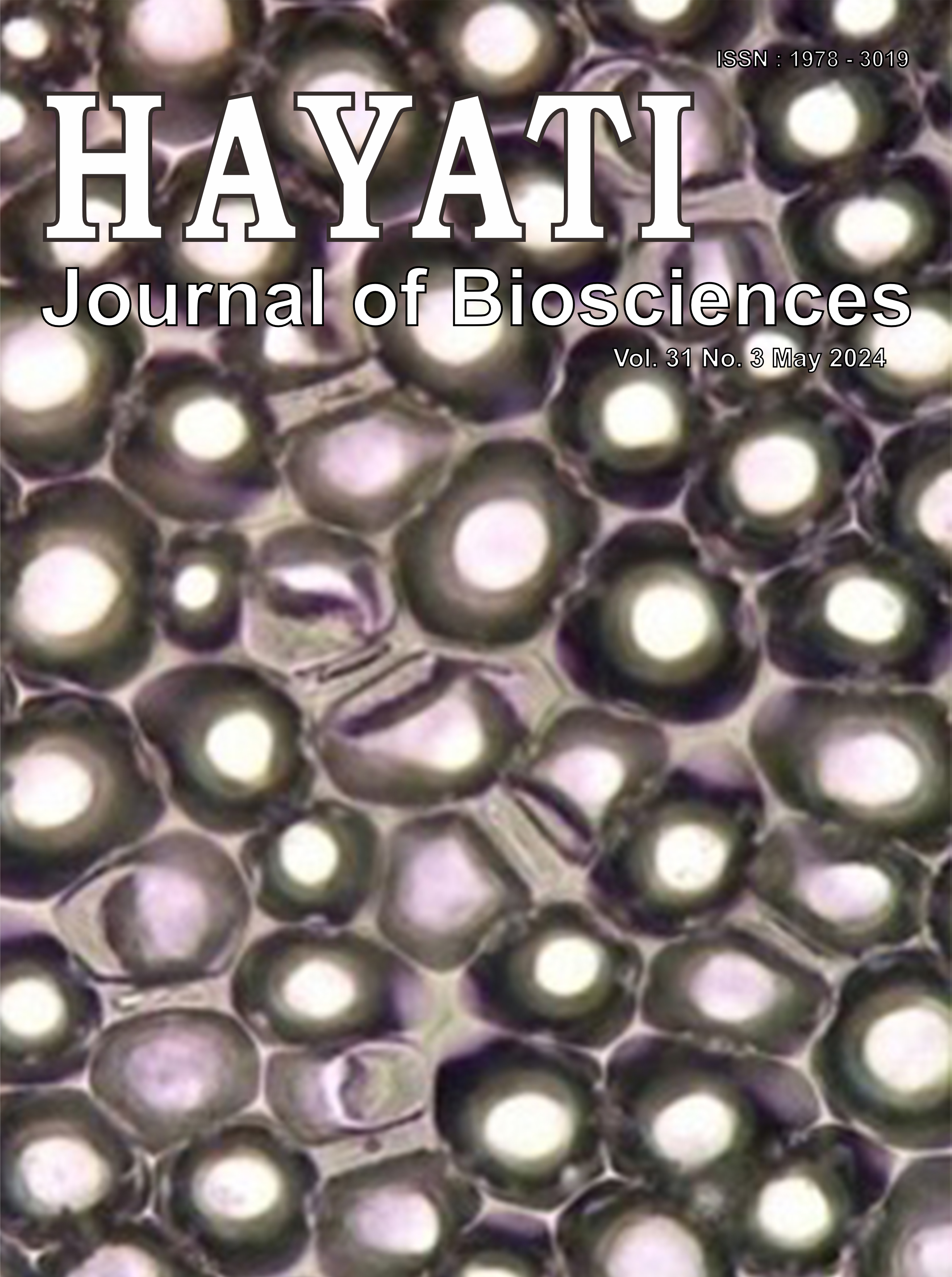Diversity of 17 Genotypes of Taro Based on Anatomy and Nutritional Value of Tuber
Abstract
Indonesia is one of the countries with the greatest diversity of taro variety, while the study of taro's morphology and nutritional characteristics is limited. The aim of this study was to evaluate the anatomical of plant and nutritional value of taro tuber. This research observed fourteen genotypes of Colacasia esculenta (7 Eddoe types, 7 Dasheen types) and 3 Xanthosoma genotypes. In three blocks of replications, the eddoe and Xanthosoma genotypes were cultivated using cormel and the dasheen genotypes with sucker. Plant anatomy (leaf, stem, and root) and tuber nutritional characteristics were analyzed. From this research, explained that stomata and epidermis number, length from stomata and epidermis, number leaf epidermis, length of leaf and stem epidermis, also length of root epidermis, endodermis, cortex, and stele among 17 genotypes of taro were statistically different. The diversity of taro based on the nutrition content of tuber between 17 genotypes of taro was considered high, as represented by water, ash, fat, protein, carbohydrate, energy, and glucomannan, which were statistically different.
Downloads
Copyright (c) 2024 Lutfy Ditya Cahyanti, Didy Sopandie, Edi Santosa, Heni Purnamawati

This work is licensed under a Creative Commons Attribution-NonCommercial 4.0 International License.
HAYATI J Biosci is an open access journal and the article's license is CC-BY-NC. This license lets others distribute, remix, tweak, and build upon author's work, as long as they credit the original creation. Authors retain copyright and grant the journal/publisher non exclusive publishing rights with the work simultaneously licensed under a https://creativecommons.org/

























.png) IPB University
IPB University Department of Biology
Department of Biology The Indonesian Biological Society
The Indonesian Biological Society 

